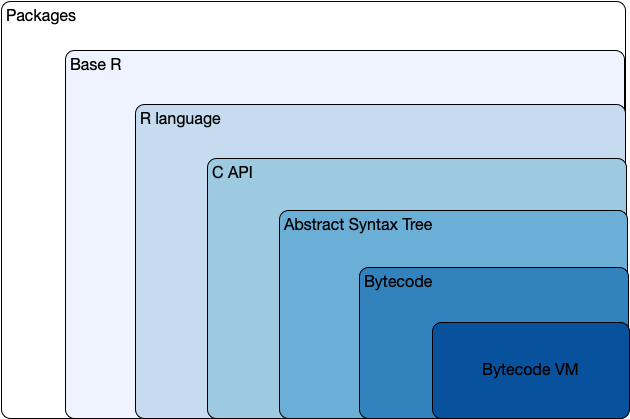1 Introduction
Modern R now executes most code in a stack-based virtual machine (VM).
The VM doesn’t really see the R code a programmer writes - this R code is first parsed to an abstract syntax tree, which is then compiled to bytecode, and this bytecode is then executed in the VM.
This book is an introduction to this bytecode and a reference for the instructions which make it up.
1.1 Who is this book for?
The image below shows a “mud map” of the layers which could be thought of as making up R. It’s not really accurate, but it gives an idea of where “bytecode” fits in to an understanding of R - at a lower level than writing a package, but not as complex as writing a virtual machine.

Everyone is at a different stage of their R journey. Not everyone will find this book interesting, useful or even understandable.
You may be interested in the book if:
- you like peeking under the hood;
- you enjoy a puzzle;
- you’ve written assembly code for a CPU;
- you’re a big fan of esoterica.
1.2 How to read this book
First, install the {rbytecode} package. {rbytecode} includes an assembler for R bytecode. This means that it is possible to create R programs directly by writing bytecode assembly.
More importantly, {rbytecode} includes a disassembler which makes it possible to take apart existing code and see how it works - leveraging existing knowledge of R to understand what the bytecode is doing.
With {rbytecode} installed, use the disassembler with small R code examples and refer to the instruction reference in Section 9. Repeat.
Then use the assembler to write and compile your own code. Burn your fingers on multiple segfaults - build up some calluses.
Then never get around to actually reading anything else in this book. :)